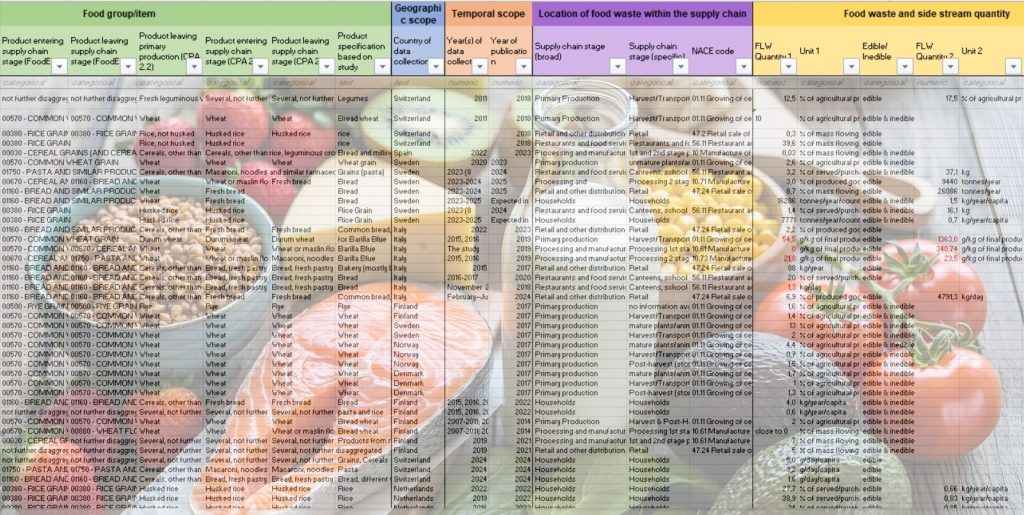
A product-level database of food loss and waste quantities of food with high waste impacts
The WASTEWISE partners from AGROSCOPE have led a piece of work in which a database of food-product-level food loss and waste quantities in Europe has been built and made public. All research partners contributed to the database with their country-specific information, with the aim of facilitating further analyses within and outside the WASTEWISE project. With this, the project contributes to a better understanding of leverage points to decrease food loss quantities and impacts by enabling product-level analyses of environmental effects, in line with the 2030 Agenda for Sustainable Development (EU Directive (EU) 2018/851).
The objective followed by the project partners was to compile product-level FLW quantities for 10–20 products for all supply chain stages, from primary production to consumption. Through a literature search and personal inquiries within and outside the project consortium, the researchers managed to identify 64 sources of data, which contributed to the database with the information they contained about food loss and waste of specific food products. They ensured that these sources used methods eligible for the European Union food waste reporting by member states.
The database comprises 484 rows in which food loss and waste quantities are entered along with some complementary information, such as the geographical and temporal scope, their classification of the corresponding food supply chain stage, etc. It contains data on 53 food items (products) classified in 12 food groups, corresponding to the food categories of fruits, vegetables, cereals, dairy, meat, and fish, with varying degrees of specification and processing.
The authors highlight the value of the database, as it comprises data from reports written in Finnish, Swedish or Spanish, and it categorises and presents all data according to a common definitional framework, which provides a useful basis for conducting further research. However, they also acknowledge its limitations and gaps, which will be addressed by an updated version of the database. Some gaps and limitations, however, have they source in the original studies so that the authors provide recommendations for future studies. Many of the gaps they describe are due to inconsistencies in food loss and waste reporting by different member states and for different food groups, as well as because of insufficient data quality and/or quantity.
